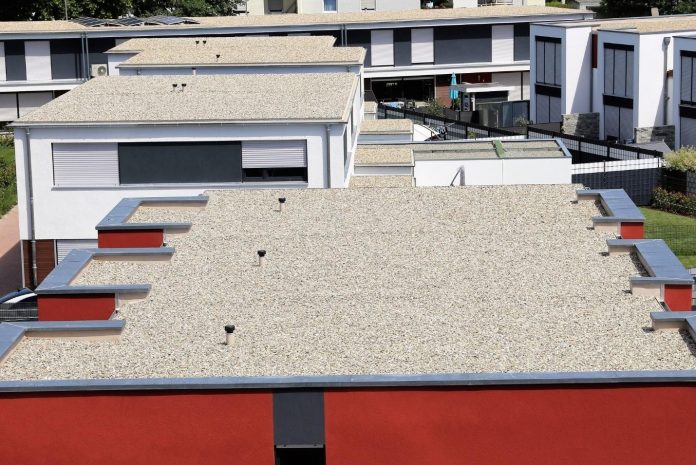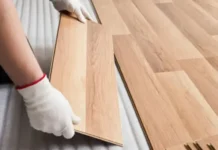Without adequate drainage built into your roof’s structure, your home or business is at risk of roof leaks and foundation problems. When water pools on a flat roof or the drainage system doesn’t carry water away from the foundation effectively, you face expensive structural repairs.
Sloped roofs can easily direct water downward toward gutters and away from the building. How do flat roofs divert water? If it’s time for a new roof or you experience water damage to your ceiling or foundation, it’s essential to understand flat roof drainage. Here’s what you need to know!
Check for Damage
A flat roof drainage system must work flawlessly to protect your home or building against internal water damage. A gap in the system or dislodged part can trap water on your roof’s flat surface and allow moisture to seep into walls and attics.
If you notice discoloration on your ceiling or pools of water on your floor, it could be time for flat roof repair to prevent additional damage and correct the drainage system.
Know Your Options
You don’t need to be a roofing expert, but knowing your flat roof drainage options can help you find the right repair solution. Depending on your roof and what works best for your home, a contractor can help you choose the best drainage system to prevent additional problems.
Flat roof draining systems can include these options.
Gutters
Also known as conductor pipes, gutters are a series of troughs placed along the edge of the roof. These troughs drain excess roof water and direct it through a piping system to move water away from your home.
An effective gutter system requires the right slopes to move water off the roof and down to the ground.
Inner Drains
More common for large flat roofs on commercial properties, inner drains help collect water in the center of the roof, then carry it away through a piping system.
Your roofer places drainage pipes under the roof or inside the parapet wall to hide the drainage system. A slight slope to the roof helps water flow to the center drain. Then the pipes take over to move water away.
Scuppers
Scuppers are an opening on the side of the wall. Water flows through the opening and into the gutter and downspout system.
Sometimes a collector head works along with scuppers to avoid damage to the wall. Make sure to keep an eye on this system to prevent clogs in the collector heads or scupper.
Choose the Best Flat Roof Drainage for Your Needs
Flat roofs lack a natural way to allow water runoff to avoid damage from pooling moisture. Be sure to do your research when it’s time for a repair or new flat roof. Choose the flat roof drainage system that fits your budget and effectively directs water away from your home.
If you found this article helpful, we hope you’ll check out more of our blogs!
Read Also : Average Cost to Replace a Roof: Your Project Calculator



































































